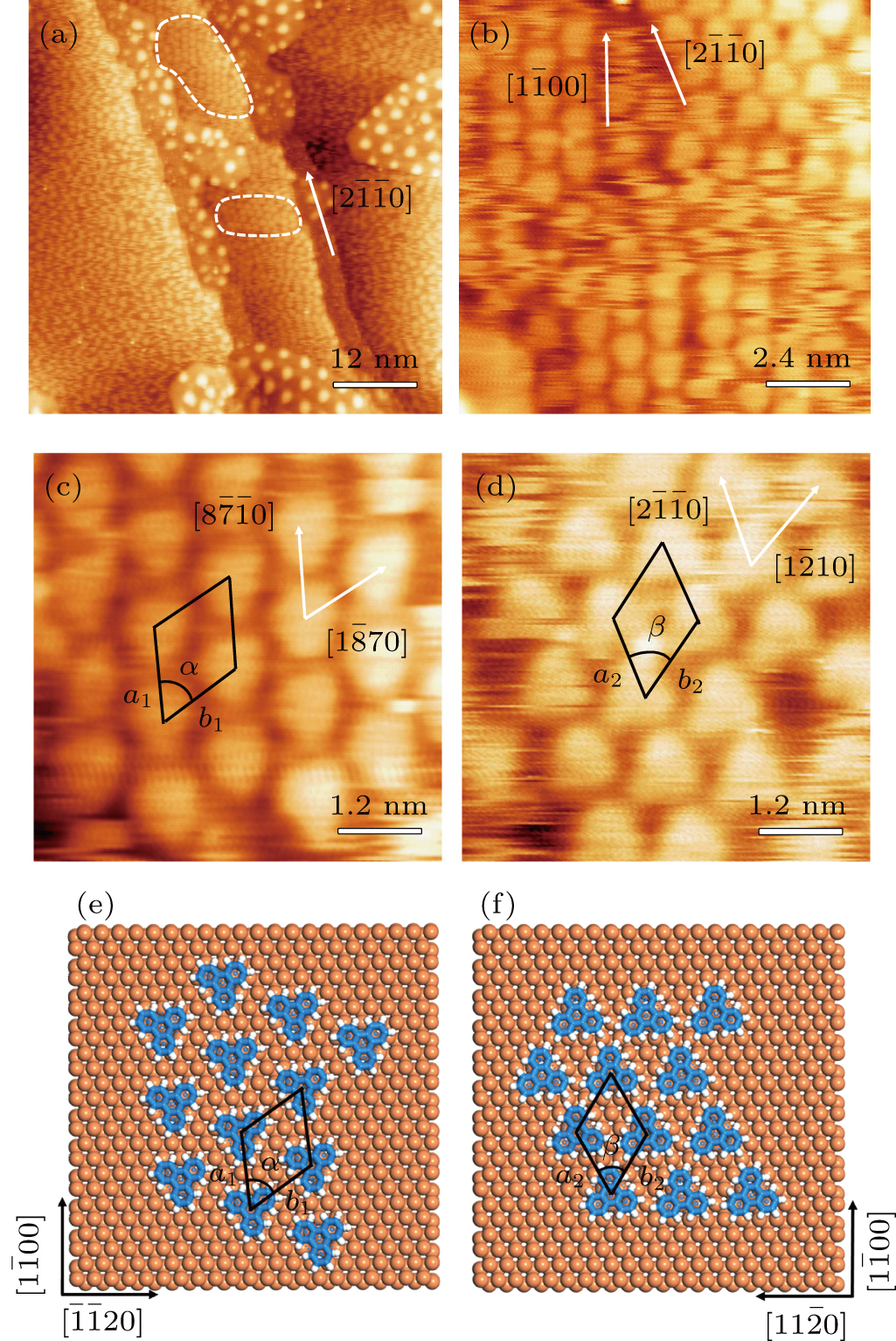|
Jing Li-Wei1, Song Jun-Jie3, Zhang Yu-Xi4, Chen Qiao-Yue1, Huang Kai-Kai1, Zhang Han-Jie1, †, He Pi-Mo1, 2, ‡
|
|
(a) Overview STM image of ∼1.0 ML of TP molecules on the bare Ru(0001) surface covered with partial graphene islands (60 nm×60 nm, Vtip =−0.141 V, I = 0.088 nA). Small close-packed domains are outlined by white dashed contours. (b) STM image showing coexistence of two close-packed superstructures (12 nm×12 nm, Vtip =−0.275 V, I = 0.101 nA). (c) The enlarged STM image for close-packed superstructures with the molecular axis nearly going along
[
1
¯
100
]. There is a diminutive rotational angle of 5° or so between the molecular axis and
[
1
¯
100
]
direction (6.0 nm×6.0 nm, Vtip =−0.275 V, I = 0.101 nA). The unit cell is highlighted by the black rhombus. The corresponding structural model is demonstrated in (e). (d) The zoom-in STM image of superstructures with the molecular axis nearly aligned with
[
1
1
¯
00
]
(6.0 nm×6.0 nm, Vtip =−0.275 V, I = 0.097 nA). The unit cell is also highlighted by the black rhombus. The corresponding structural model is demonstrated in (f). The blue, gray, and orange hard spheres represent carbon, hydrogen, and Ru atoms, respectively.
|
